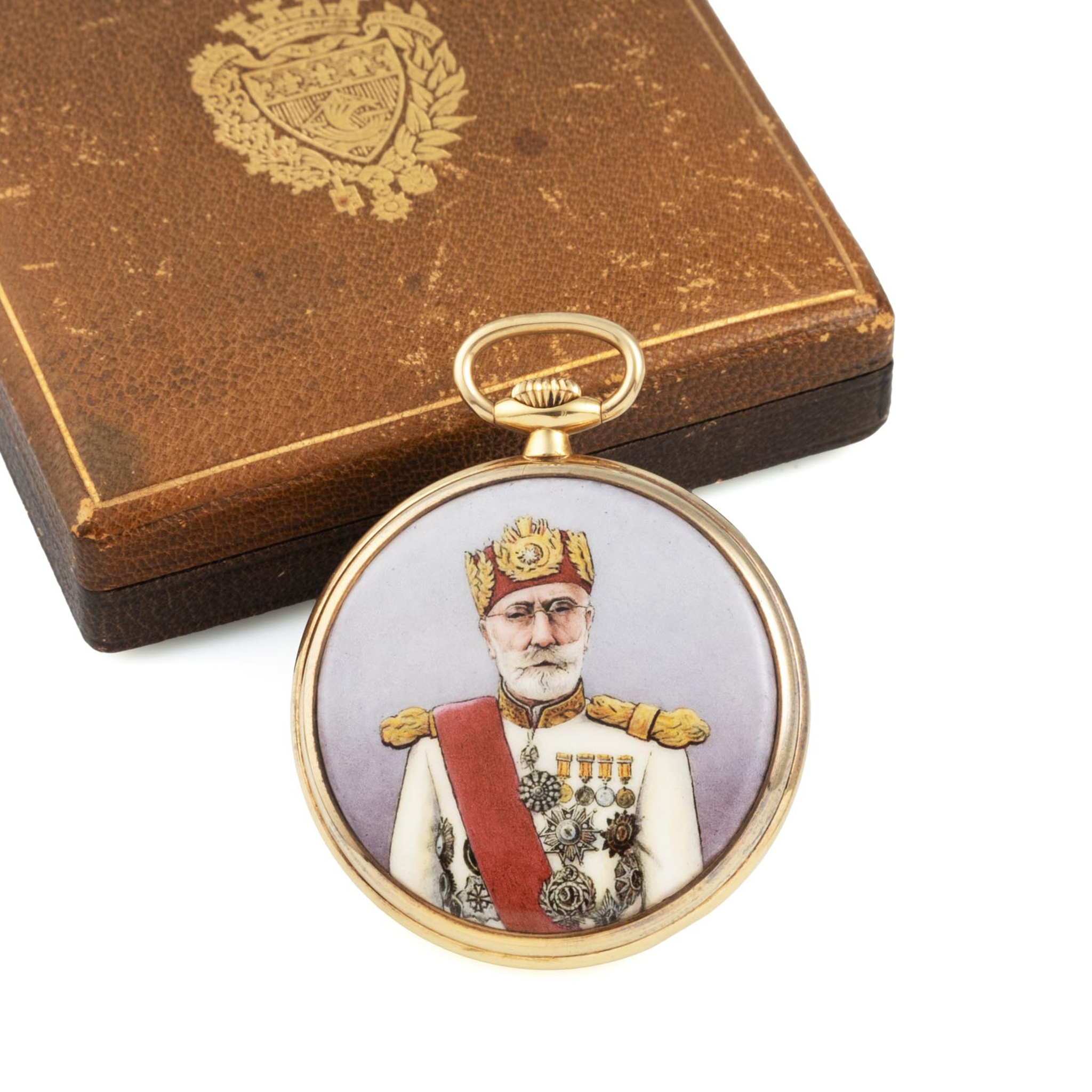Geneva, Nov 09, 2025
LOT 441
UNSIGNED, SWITZERLAND, MOHAMED EL-AMINE BEY , "LE BEY", PRESENTATION POCKET WATCH GIFTED FROM MOHAMED EL-AMINE BEY TO PIERRE VOIZARD, RESIDENT GENERAL OF FRANCE IN TUNISIA, GOLD AND ENAMEL
CHF 3,000 - 6,000
HKD 29,200 - 59,000 / USD 3,800 - 7,500 / EUR 3,300 - 6,500 / JPY 570,000 - 1,140,000
Sold: CHF 4,500
A fine and rare, 18k yellow gold and enamel open-face, keyless winding pocket watch. Presentation watch with the back of the watch depicts an enameled portrait of Mohamed el-Amine Bey in ornate uniform with numerous official decorations. Silver dial, Arabic numerals with subsidiary seconds at 6.
| Grading System | |
|---|---|
Grade: AA |
Very good |
Case: 3 |
Good |
Movement: 3* |
Good Overhaul recommended, at buyer's expense |
Dial: 3-01 |
Good HANDS Original |
Brand Unsigned, Switzerland
Model Mohamed el-Amine Bey , "Le Bey"
Year 1953
Diameter 47 mm.
Caliber 37 mm., rhodium-plated, 16 jewels, straight-line lever escapement, cut bimetallic compensation balance, Breguet blued steel balance-spring, index regulator with swan-neck spring and micrometric screw.
Weight 60 gr.
Signature dial
Biography
At his birth on September 4, 1881, this prince was named Mohamed el-Amine ben el-Habib el-Husseini. He was the last ruler of the Husseinite dynasty, of Janissary origin, which had ruled Tunisia since 1705. Following the deposition of his uncle Moncef Bey, he was enthroned on May 15, 1943, during the last era of the French Protectorate. His official title was: Possessor of the Regency of Tunis.
After the release of his son Chedly from Kairouan prison, father and son moved into a two-room apartment on Rue Fénelon, where the last Bey of Tunisia died on September 30, 1962, amidst general indifference.

